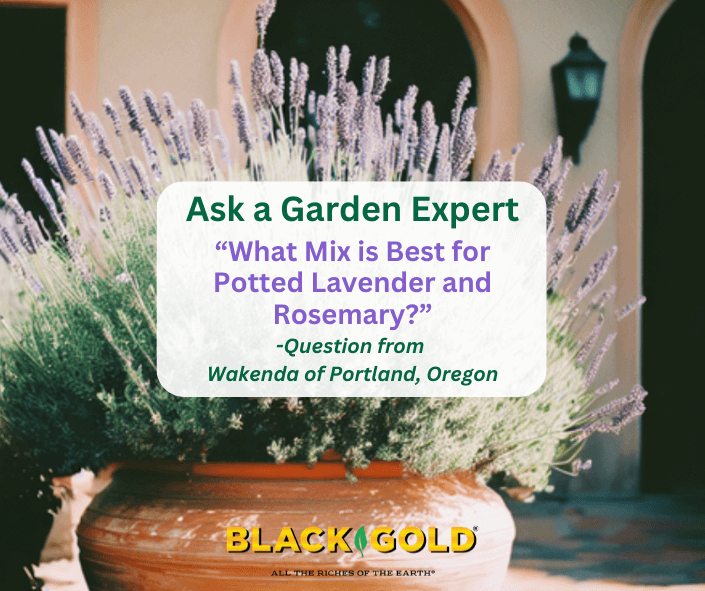
“What is the best soil mixture for potted rosemary and lavender?” Wakenda of Portland, Oregon.


Parsley, Sage, Rosemary, and Thyme is one of the most popular songs by Simon and Garfunkel, and both the herbs and song are favorites. But, what about basil? Shouldn’t basil be a part of the song lyrics? Truly, the addition of basil would create a wordier line in the song, but the addition of the herb would complete my list of top herbs to grow in summer. (We will leave parsley out because most gardeners start the plant as a spring herb.)
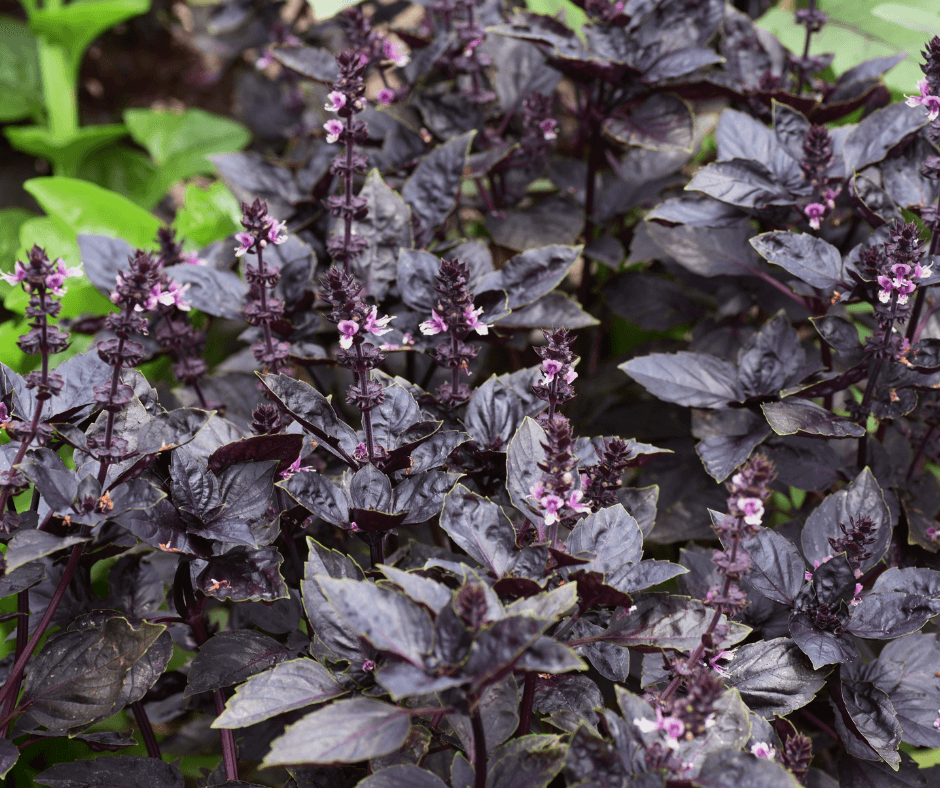
Basil (Ocimum basilicum) is one of the most important culinary summer herbs, and the plant is steeped in history and folklore. It is probably the most well-known and widely grown of all the summer herbs. Although ubiquitous to southern European cuisine, basil is a native of Africa, Asia, and parts of the Middle East. The word itself, basil, is believed to be derived from the Greek Basilikon phuton which means “kingly herb.”
In my summer garden, I would never be without a container or two of basil. There are many different cultivars–too many to list. Basil flavors range from sweet basil, such as ‘Genova’ or ‘Lettuce Leaf’, to the anise-scented leaves of Thai basil (Ocimum basilicum var. thyrsiflora, ‘Siam Queen‘ is a beautiful flowering form), or the lemony leaves of ‘Mrs. Burns’ ‘Lemon basil (Ocimum basilicum var. citriodora ‘Mrs. Burns). There are also colorful purple and red basils, such as ‘Dark Purple Opal‘ or the maroon ‘Osmin‘, etc.
While I always try a new variety each year. Last summer, I grew ‘Emerald Towers’ for the first time. It grew, as the name implies, in more of a pyramid shape, and, as advertised, the plant produced no flowers. The leaves had the same flavor as sweet basil. It was so effortless, I plan to grow one in a pot near the kitchen door for summer!
Basil plants will bloom with spikes of white or lavender flowers, but I recommend gardeners pinch the flowers off, so the plant will continue to produce new leaves rather than seeds. Sometimes, in the fall I leave a few flower spikes when plants are tired because they seem to be a magnet for honeybees.

Sage (Salvia officinalis) is another easy-to-grow summer herb originating from the Mediterranean. In our Pacific Northwest climate, the shrubby, evergreen will overwinter as a perennial (USDA Hardiness Zones 5-11). The attractive plants look good either in ornamental gardens or herb gardens.
There are quite a few garden-worthy culinary sage varieties with variations in leaf color from standard green to purple to variegated forms, which usually have leaves with purple tones and white margins. The large-leaved ‘Berggarten‘ sage has big, rounded, felty-green leaves, and the purple, ivory, and green-leaved ‘Tricolor‘ sage is both good-looking and savory. In the spring or early summer, the sage plants produce spikes of lavender-blue flowers visited by bees.
Any sage can be grown as an attractive potted plant, if given full sun a large pot filled with quality, well-drained soil and regular water.
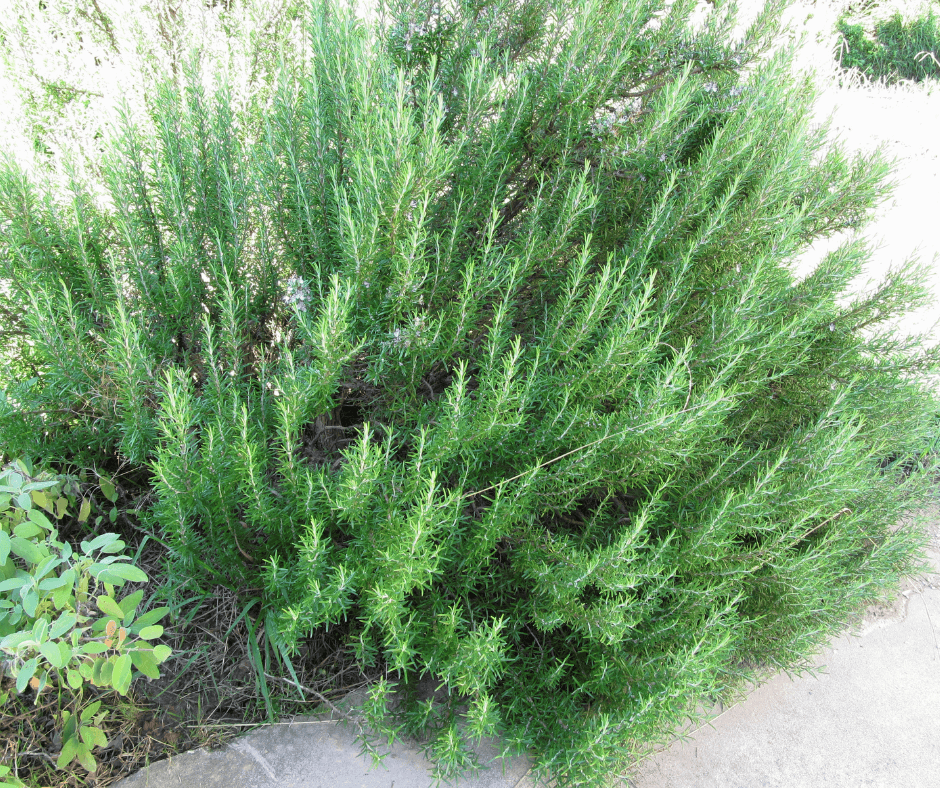
Another shrubby perennial herb is rosemary (Rosmarinus officinalis, USDA Hardiness Zones 7-11). While many plants did not survive our January ice storm last winter, rosemary plants usually live through our winters. Fortunately, some cultivated varieties are hardier than others. ‘Arp‘ is a selection that tends to be more winter-hardy than others and can survive winters up to Zone 6.
Rosemary grows to be a large, attractive plant in the garden. Specimens can reach 3-feet or more. In fact, they are often grown as shrubs in the Mediterranean. For their best chance of survival, choose a full-sun location with sharply-drained soil. The roots will not tolerate wet feet in the winter.
Small spikes of flowers appear along the stems in various shades of lavender-blue, sometimes white, in the late spring or early summer. There are trailing forms that are ideal for planting along a retaining wall or in a large container. ‘Prostratus‘ (Zones 8-11), which can reach a foot or so and spread to 3 feet or more, is the most common creeping form available.
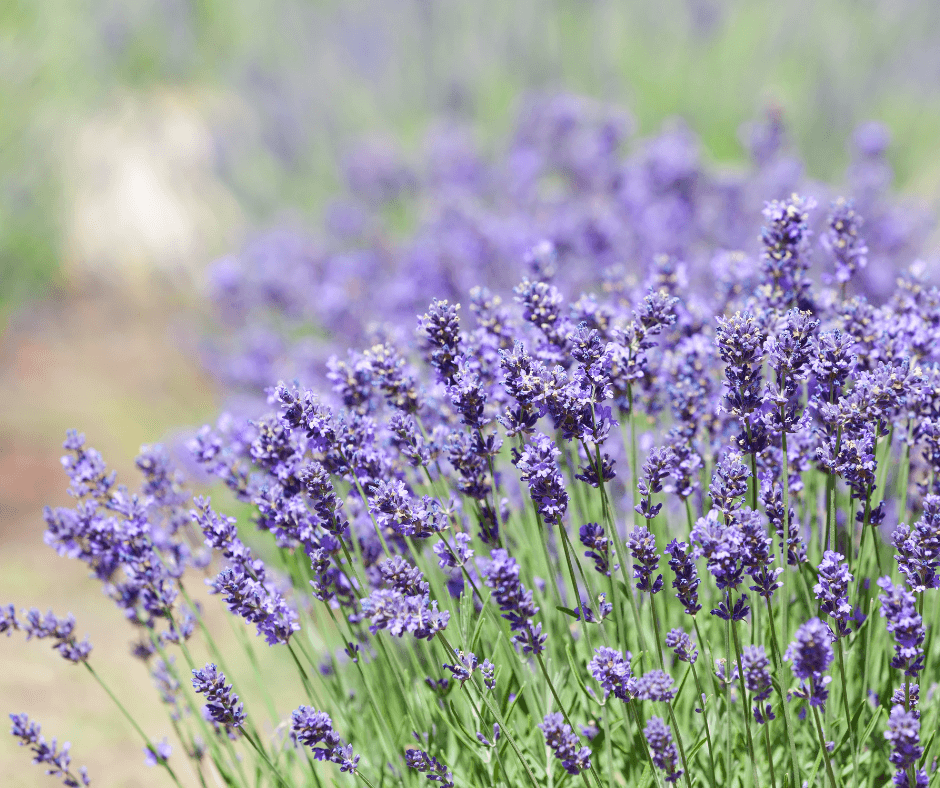
Few herbs are as strongly identified with fragrance and color as lavender (Lavandula spp.). There are many beautiful species and varieties to try, including the classic, compact ‘Munstead’ English lavender (Lavandula angustifolia ‘Munstead’), and lovely ‘Lady’ lavender (Lavandula ‘Lady’), which blooms in the first year from seed. ‘Vera‘ (Lavandula angustifolia ‘Vera’) is another compact form known for its strong, aromatic fragrance and dense wands of lavender-blue flowers.
Lavender is a short-lived shrubby perennial, which varies in hardiness depending on the species. English lavender (Lavandula angustifolia), the hardiest form, will survive in Zone 5 or 6. All grow best when given full sun and soil with good drainage. Like rosemary, they do not appreciate wet feet in the winter. With good care, plants will survive for four to five years before they begin to decline and require replacement.
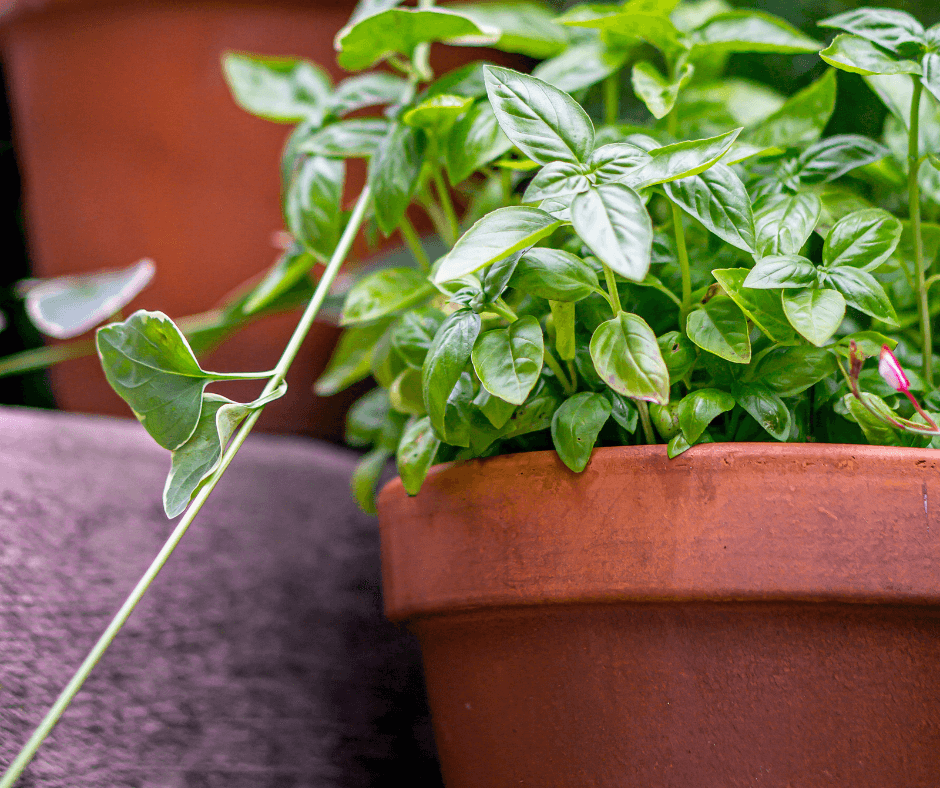
All of the herbs listed need warm temperatures, and a rule of thumb should planted outdoors after the threat of frost has passed. A full-sun location is required. For plants in containers, all will thrive in Black Gold Natural & Organic Potting Mix. The addition of perlite and pumice to increase drainage is recommended. Add three parts mix to one part pumice/Black Gold Perlite, and make sure the container is large and has drainage holes at the base.
There are so many different herbs that are readily available to the home gardener. If you have a favorite, check out the herb section at your local garden center for the best plants in your area. While many may not be winter hardy, they can provide great satisfaction during the summer months.
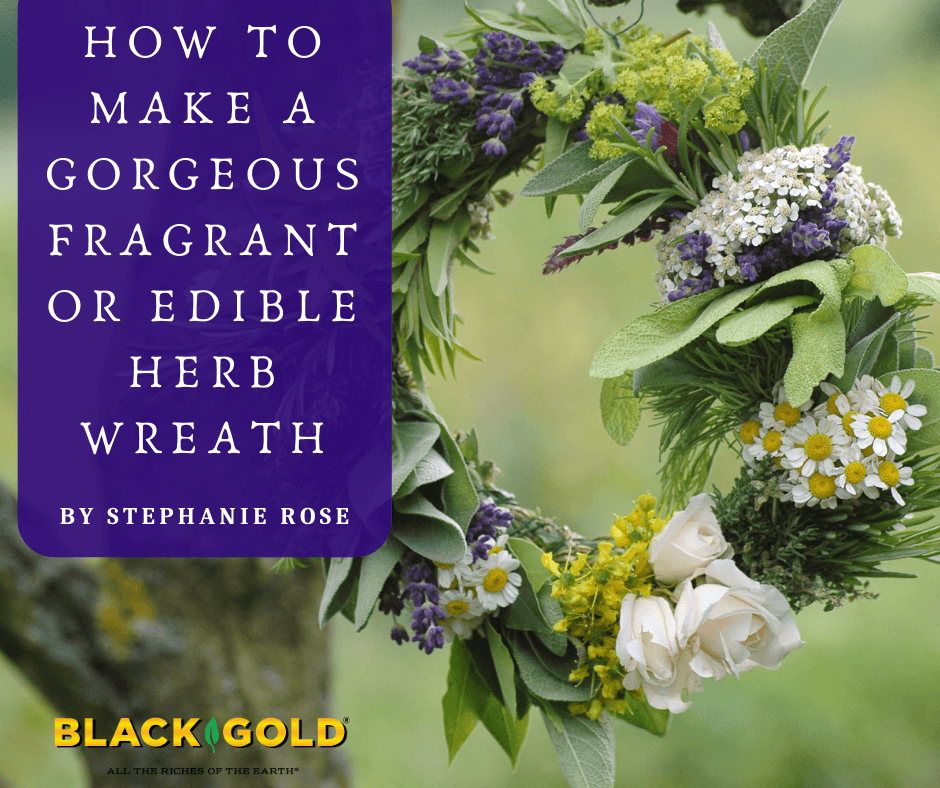
An herbal wreath is a fragrant and decorative way to dry your culinary herbs. While wreaths are most commonly used throughout the holiday season, especially pine or fir wreaths for their fresh scents, herb wreaths can bring aroma and ambiance indoors throughout the year.
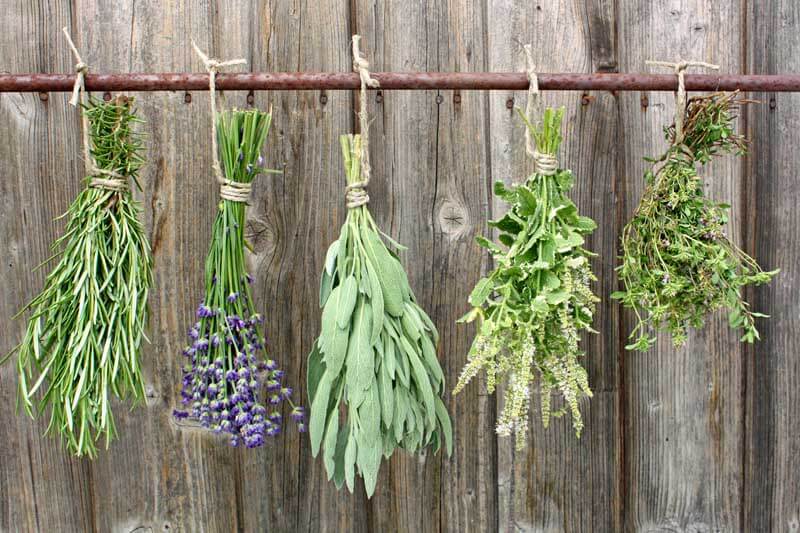
Choose herbs to harvest that have not yet flowered. Cut the stems in the morning after the dew has dried, but before the heat of the day. Use clean, sharp scissors, or pruners. bundle them together in stems of five to ten, and hang them to dry. Once they are 3/4 of the way dry, they are ready to work with. At this point, they are not crisp. To dry bay leaves, place them between two paper towels and set a book on top of them. After a week, they should be ready to use. Here are four potential wreaths to make:

Some herbs last longer than others in fresh herbal wreaths. Good herbs to choose include evergreens, such as bay stems, lavender, rosemary, sage, and even thyme stems. Flowering herbs, like chamomile, tansy, rosebuds, and yarrow, also work well. Avoid more tender herbs, like dill, parsley, or basil; they do not last and look poorly after just a couple of hours.
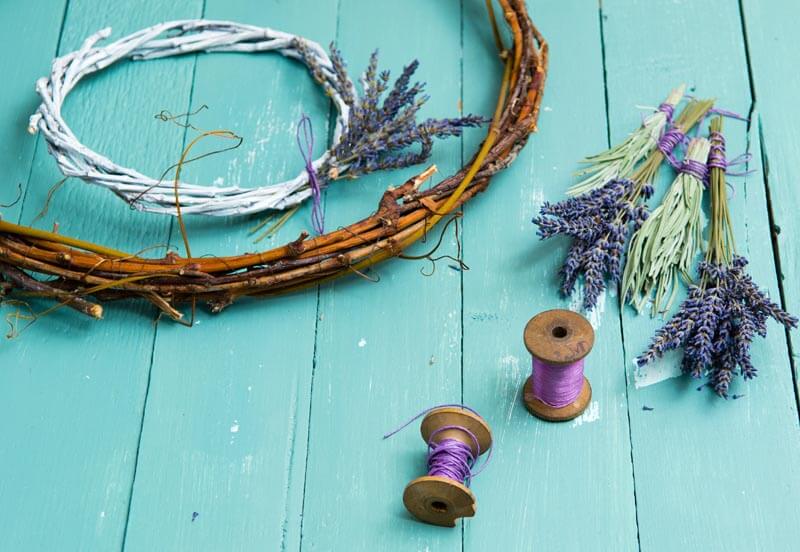
Once you have collected a variety of herbs, you can dry them in a beautiful wreath. I like to contrast needles with broad leaves and vary the color, but a wreath made of entirely one type of foliage can also be pretty.

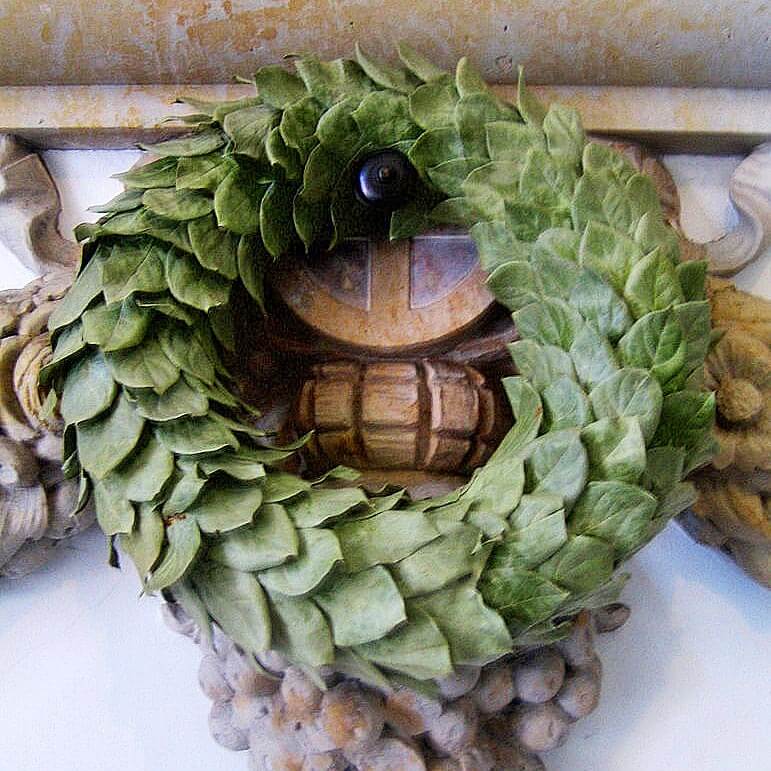
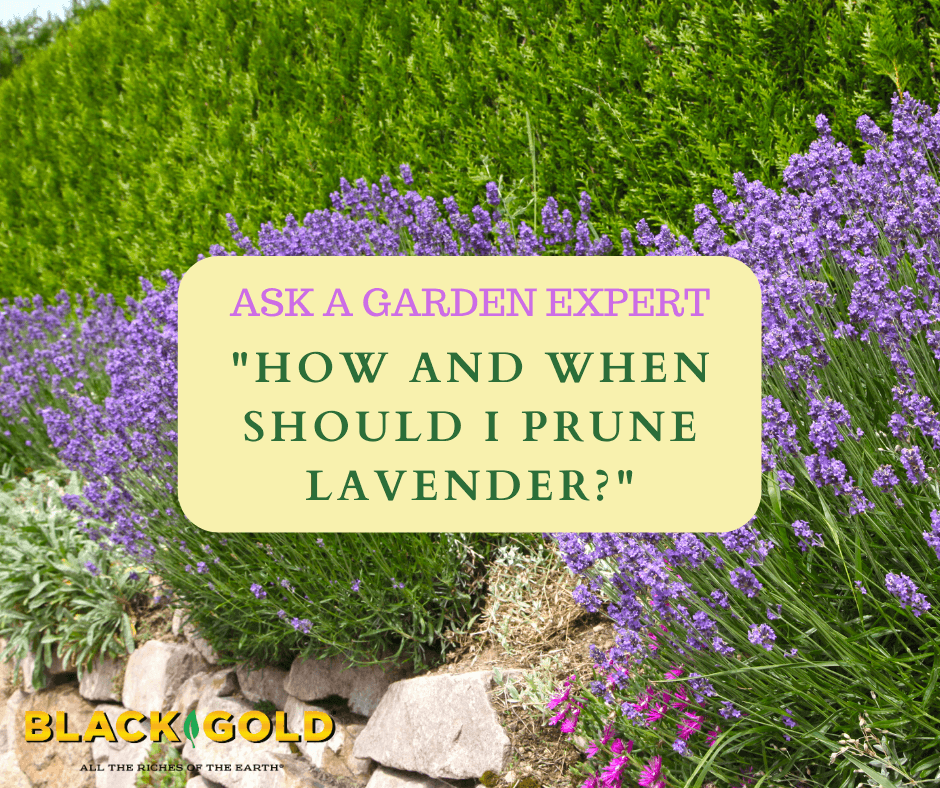
“When should I prune lavender? I tried it at the end of summer last year, but I think I might have cut too far back.” Question from Manda of Florence, Kentucky
Answer: In my experience, lavender has the best regrowth results if one waits to prune until the plants begin to produce fresh spring leaves. It simply bounces back best when it has begun to actively grow. It is a warm-season perennial, so wait until April before trimming it.
The best pruning method is to cut the shrubby top growth back by 1/3, using sharp pruning shears. Try to keep the top rounded to maintain a pleasing, bushy habit. At this time, you will also want to remove any dead or dying stems. Don’t be tempted to cut it back further. If you prune lavender back too far towards the base, it can invite fungal disease and disable the plant from fully recovering to its former glory.
Happy lavender pruning!
Jessie Keith
Black Gold Horticulturist
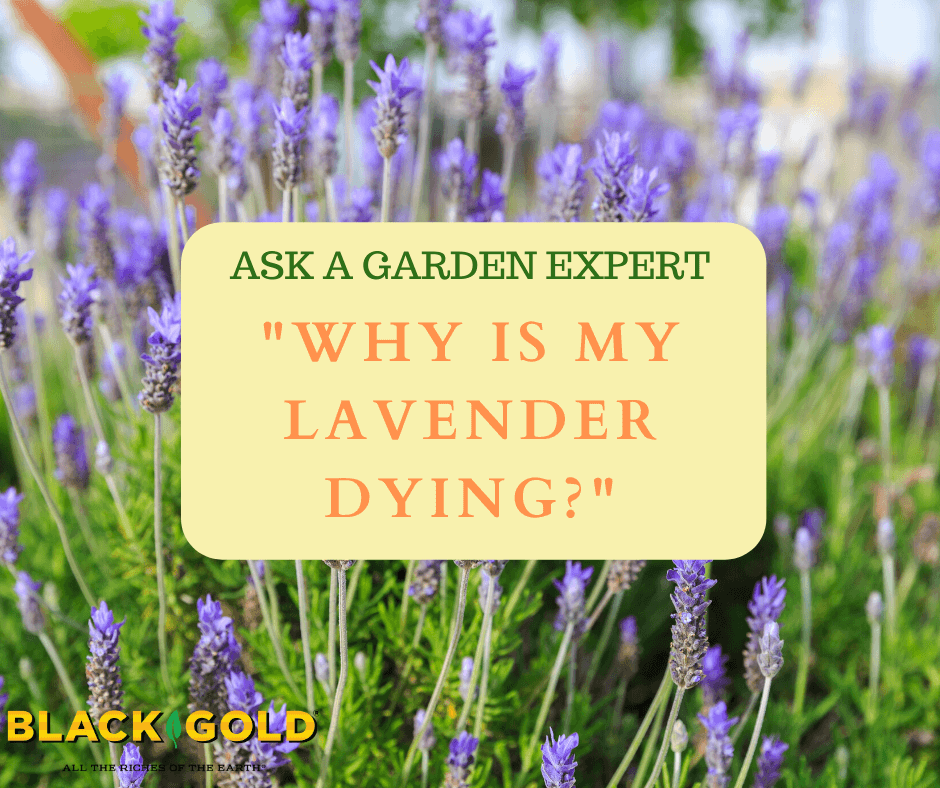
“This is the 2nd lavender I am having problems growing. I can pull up part of it like it’s rotting. What am I doing wrong? There is another Lavender about 3 feet away that is looking great.” Question from Jacklyn of Portland, Oregon
Answer: When lavender (Lavandula spp.) struggles, it is almost always due to a problem with soil quality and drainage. If fungal rot has taken hold, it is definitely caused by excess soil moisture. The frequent rains of the Pacific Northwest make it even more important to give your lavender very sharply drained soil. The difference between soil from one garden spot to another can be quite dramatic, even if they are only 3 feet away.
Lavenders naturally grow along sunny uplands with very well-drained soil, and they require full sun. If the soil is too moist and does not drain fast enough, rot will take hold. I encourage you to read our article titled, Soil Matters to Lavender; it will give you all of the information you need to properly amend your soil for lavender growing. You might also consider growing lavender in large containers and cutting their mix with part Black Gold All Purpose Mix and part Black Gold Cactus Mix. Topping the pots off with decorative pebbles would also be helpful.
I hope that these tips help!
Happy gardening,
Jessie Keith
Black Gold Horticulturist
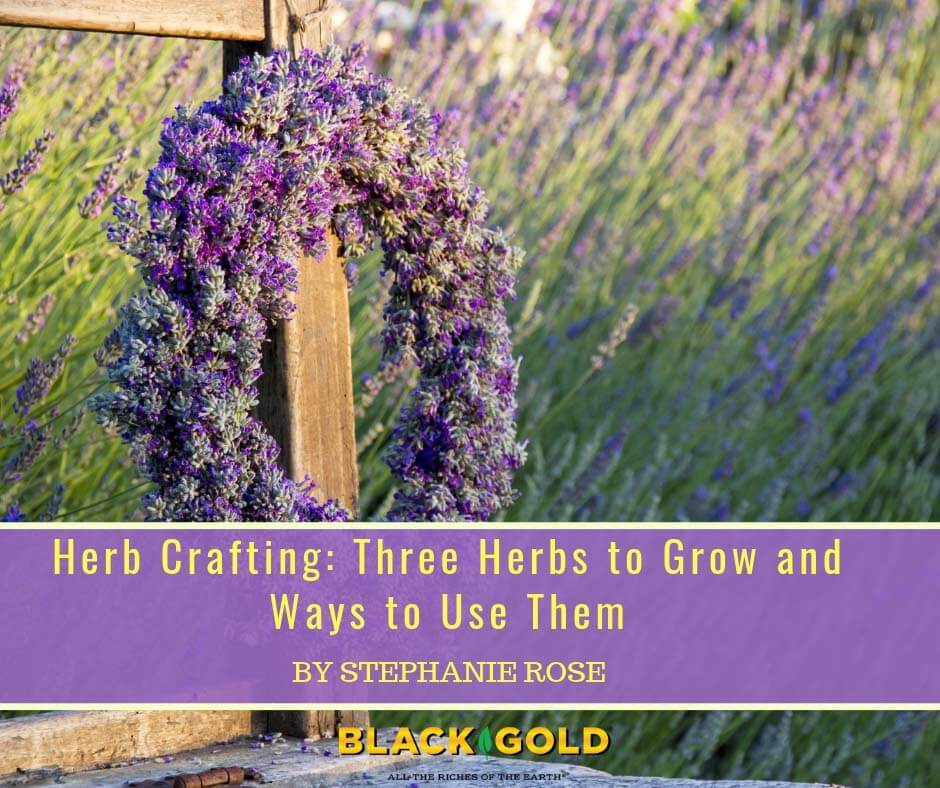
You don’t need a huge garden to make an abundance of herb crafts to benefit your home, garden, and artistic inclinations. Starting with just a few common and versatile herbs is an easy way to get your hands dirty and feel the magic of plants. I’ve chosen three herbs that are perfect for herb crafting because you can turn them into all sorts of potions, lotions, recipes, and garden crafts. Wait until you see all that you can create with these three familiar garden herbs: lavender, rosemary, and calendula.
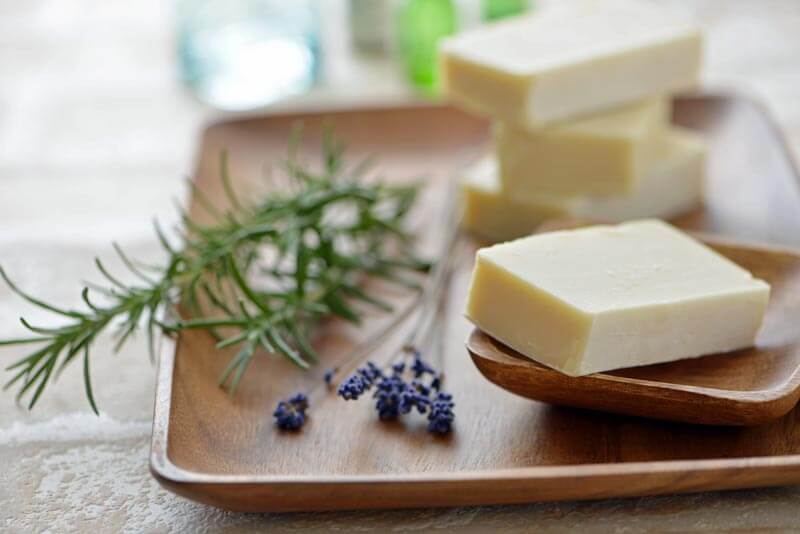
Lavender is my all-time favorite scent. It’s light, floral, and soothing, but even more, it has helpful herbal properties that can be used in your home, garden, on your skin, and also in the kitchen. The scent of lavender has a balance of sweetness and spice that makes it appetizing and appropriate for baking, tea, soda-flavoring, and all kinds of body care recipes. The scent promotes relaxation and exudes cleanliness, which makes it ideal for scentings linens and clothing. And its antiseptic and antibacterial properties make it a perfect aroma to freshen the air, your skin, and your home.
English lavender (Lavandula angustifolia, USDA Hardiness Zones 5-8) is native to the Mediterranean, so it loves climates with hot, dry summers and cool winters. It is drought-resistant and thrives in well-drained soil with some organic matter and a neutral to slightly alkaline pH (6.4 to 8.2). Plant English lavender in full sun and prune in both early spring and late summer to keep a neat and productive plant. Cut it back up to one-third while pruning and reserve the unopened flower buds and leaves to use in recipes around the house. (For a more detailed growing guide, read more here.)
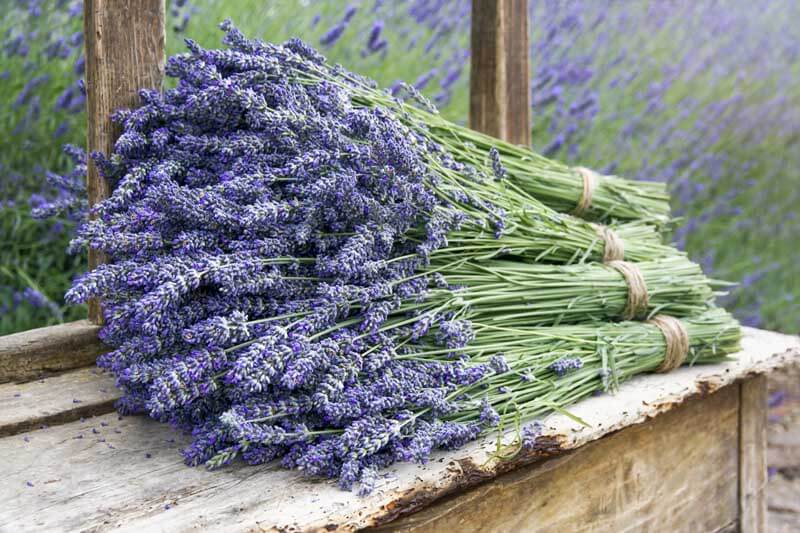
For dried flowers, harvest Lavandula angustifolia when it has visible purple buds but before the flowers open; buds retain better color and fragrance. Harvest the stems in the morning when the oil content of the leaves and flowers is the highest. Use sharp, clean pruners. (Leave some of the shorter bud stems on the plant for bees.) Gather the harvested stems into a bundle, tie them together with twine, and hang the bundle upside down to dry in a cool place away from direct sunlight.
When dry, roll the stems between your palms over a plate to catch the buds. You can also remove the leaves to infuse the oil, vinegar, and make tea. Store the dried flowers and leaves separately in airtight containers for up to one year.
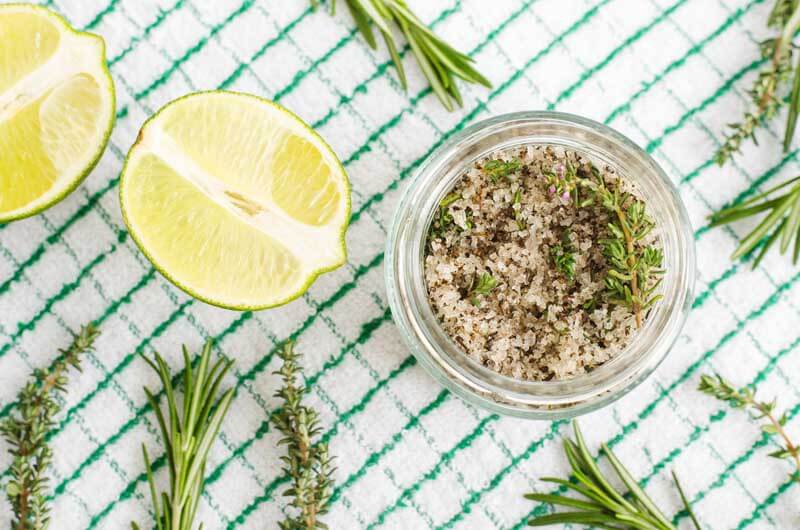
Rosemary has long been prized for its antiseptic and antibacterial properties. It is excellent for deodorizing and cleaning; the scent is purported to help focus and memory. In ancient times, scholars wore crowns of rosemary when studying for exams, so imagine how it can help you perk up in the morning shower! Did you know that rosemary is also well known to be THE herb for healthy hair? It stimulates hair growth and adds shine.
Most of all, rosemary is beloved for its delicious flavor in recipes. It ramps up a roast and cooked root vegetables and adds an earthy punch to soups and stews. Whether you are freshening up your home, trying to wake up or adding oomph to hearty recipes. Rosemary can’t be beat!
Rosemary cultivars have variable hardiness. Most overwinter in USDA Hardiness Zones 8-10, but some hardier varieties, like ‘Arp’, may survive in Zones 6 or 7. Otherwise, grow rosemary in a pot that you can bring indoors in fall or grow it as an annual. It likes well-drained soil and full sun. Rosemary does well in dry conditions, so be careful not to overwater it. Overwatering rosemary can commonly lead to root rot.

Cut sprigs of rosemary to use fresh or tie them up in a bundle to dry, the same way you would with lavender. When dry, remove the leaves by pinching the top of the stem with your finger and thumb and running it along the stem to the bottom. The leaves will pop right off. Keep dried rosemary sealed in an airtight container for up to one year.

Many people view calendula as an annual garden flower, but with so many healing properties and beneficial uses, herb nerds see it more as a versatile garden herb. It’s been used for thousands of years to help heal minor wounds and inflammations, has a bright and sunny personality that attracts a host of beneficial insects to the garden, and it could not be easier to grow. Include calendula in your herb garden this year for some pops of color and fun herbal crafts.
Calendula is an annual that grows easily from seed either sown directly in the garden or indoors. Begin seeds indoors about eight weeks before transplanting calendula in the garden. Plant your calendula somewhere in the garden with good soil amended with fertilizer-boosted Black Gold Earthworm Castings that gets a lot of light but isn’t extremely hot. Deadhead and harvest the flowers liberally throughout the season, and you’ll have continual blooms to pick from spring to fall.
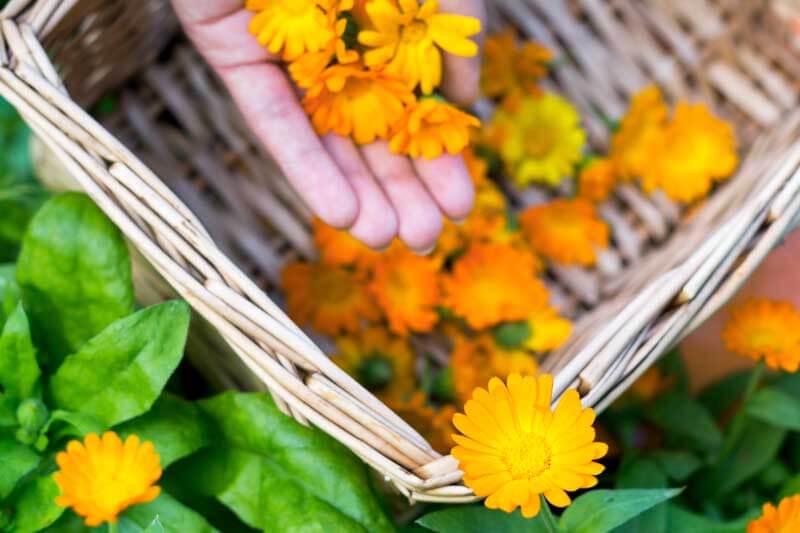
Harvest the full flower heads from new blooms and spread them out in a single layer in a drying screen (which can be as simple as using a window screen) or setting them in one layer in a shallow basket. Leave the flowers in a well-ventilated area that is cool, dry, and away from direct sunlight. After a few days, test for dryness. The petals should sound crunchy and not feel cool to the touch. Store the dried flowers in an airtight container for up to one year.
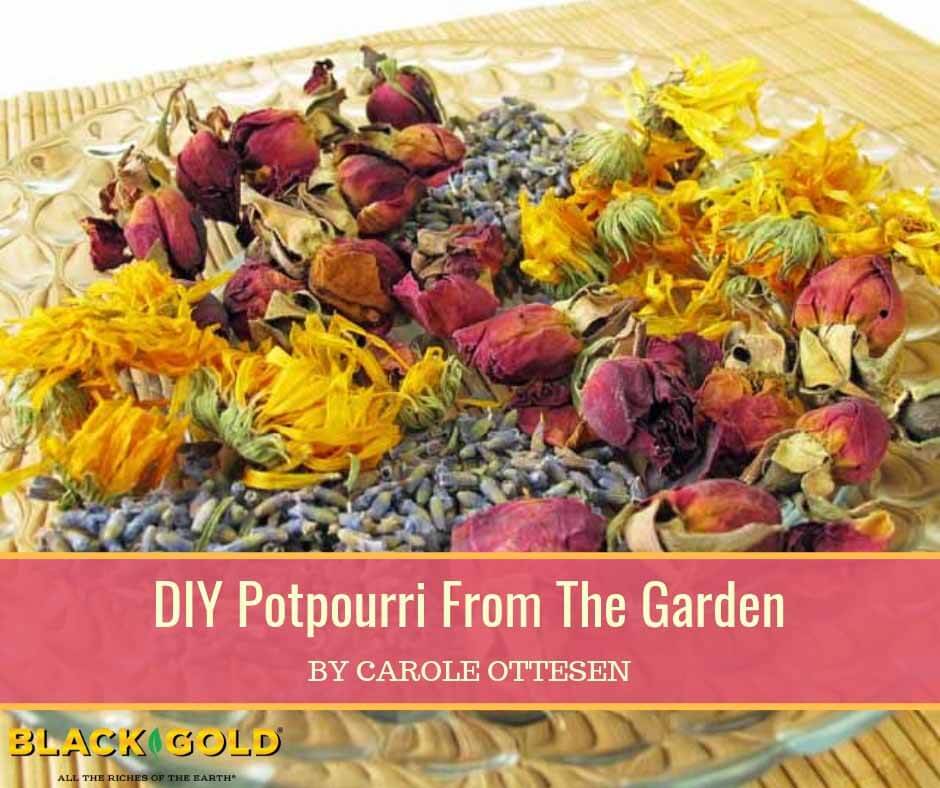
Potpourri is a mixture of aromatic plant parts that captures the essence of the growing season for yearlong enjoyment. To create your own, gather leaves and petals that are attractive as well as fragrant. Preserve them by thorough drying, and mix them to heighten their aroma and looks.
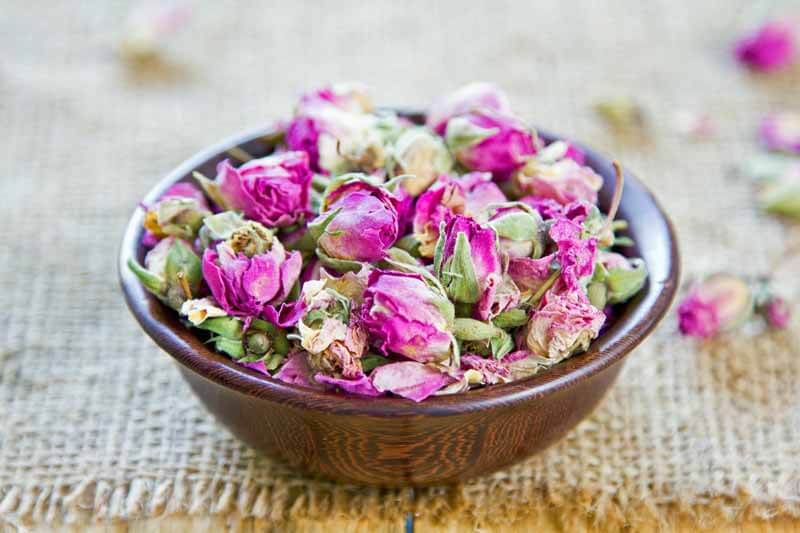
Some classic dried potpourri additions with exceptional fragrance include lavender flowers and leaves, rose buds and petals, and elderflowers. Pot marigold petals are also a favorite for orange-yellow color.
A lavender that performs well in almost any climate is Phenomenal™ (Lavandula x intermedia Phenomenal™, 2-3 feet high), a true hybrid hedge lavender. French lavender (Lavandula stoechas, 1-3 feet high) is another easy-to-grow species with its showy tufted flowers, strong scent, and good drought tolerance. This one is a little more tender, surviving to USDA Hardiness Zones 7-10. (Click here to learn how to grow your own lavender.)
Roses with fragrance and pretty color include the easy-care, reblooming, peach-colored shrub rose At Last® or the bi-colored (strawberry and cream) hybrid tea Double Delight™. These roses yield both small buds and petals. Cut small tight buds and harvest rose petals by gripping the full-blown flowers, pulling gently, and catching nicely separated petals. Keep the petals whole. (Click here to discover more tough, fragrant roses.)
Tiny elderflower blooms also dry nicely and add a sweet, summery scent to potpourri. There are many ornamental elderberries for the garden with nice flowers or you can pick the flowers from native elderberries along roadsides.
Scented geraniums are another essential ingredient with aromatic leaves that retain their scent. Different species and cultivars have different scents including rose, citrus, and mint as well as those with the subtle smells of fruits and chocolate. (Click here to learn more about growing scented geraniums.)
Mints and lemony herbs of all sorts will also offer bright flavor to potpourri. Some of the more pungent than others. Lasting options include lemon verbena and lemon balm. (Click here to learn more about lemony herbs.)
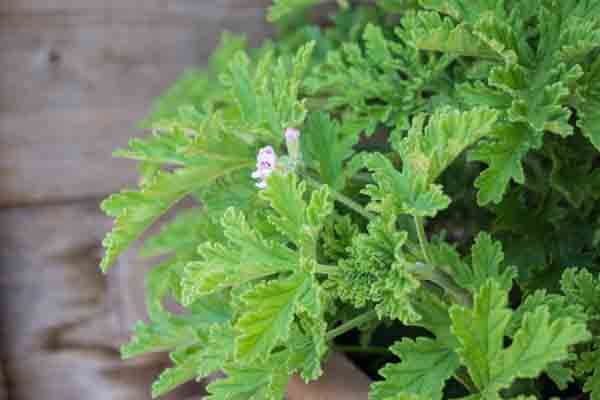
Most of the summer plants for potpourri are common garden plants that thrive in full sun and well-drained, fertile garden soil. In-ground soils should be fortified with quality compost for best performance. Tender potpourri plants, such as scented geraniums, grow very well in containers. For these, a porous potting mix, such as Black Gold Natural & Organic Potting Mix, is a good choice.
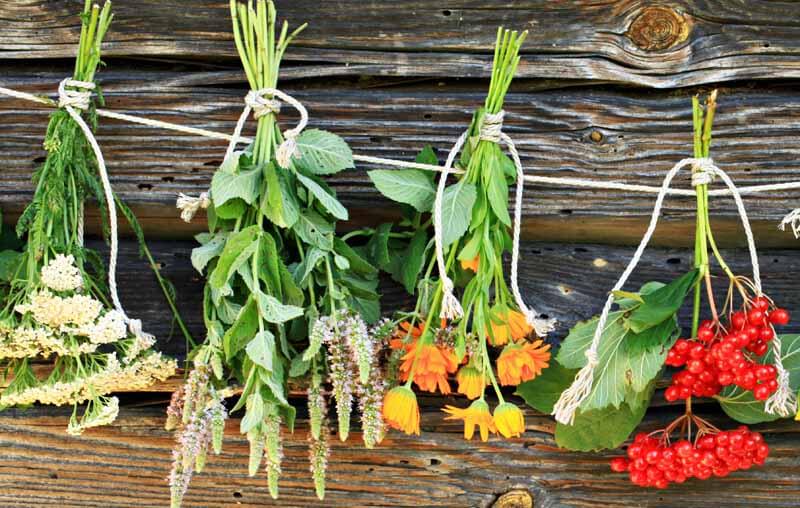
Thorough drying is absolutely crucial for the creation of a potpourri. Moisture in leaves or petals may cause mold and put a damper on their scent quality. Adding drops of essential oil (lavender, rose, etc.) can help fix a stronger fragrance.
You cannot make potpourri until all plant parts are thoroughly dry. There are several drying methods to try. Here are four:
Potpourri possibilities are endless and depend upon personal preference and what plants are available in your yard and garden for harvesting. Here are two reliable, wonderfully fragrant recipes. They can be used for linen or drawer sachets or home aromatherapy.
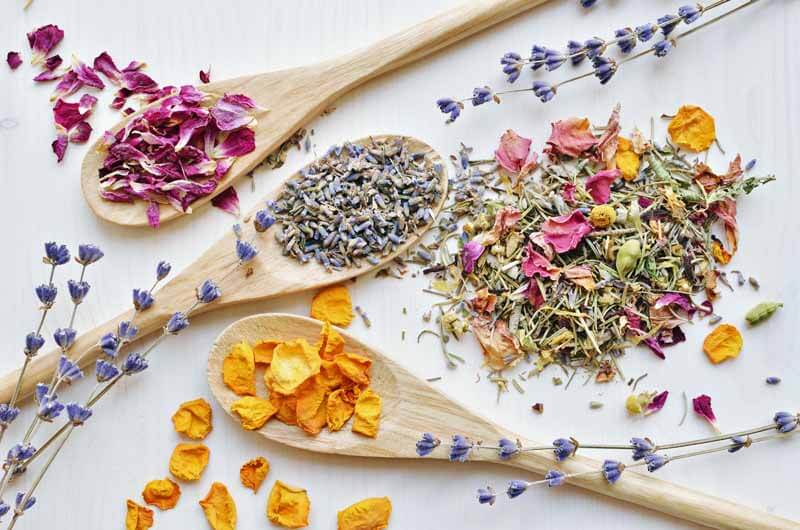
Ingredients:
Preparation:
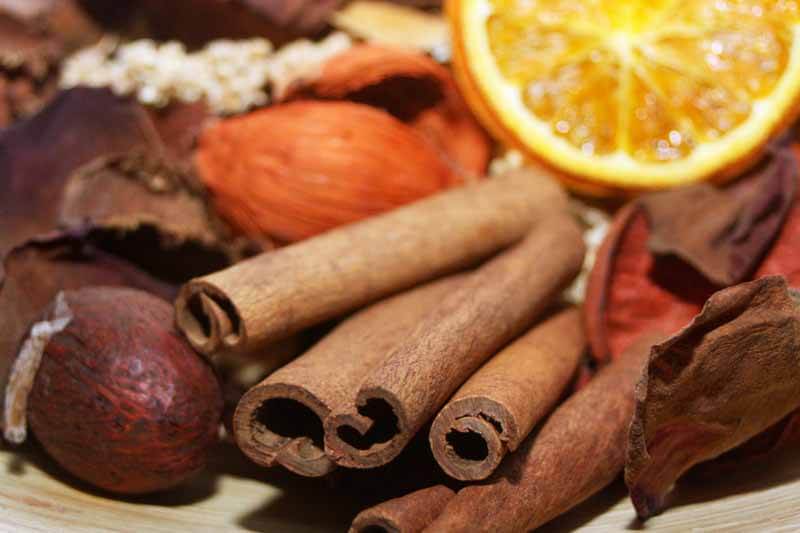
Many landscape evergreens—pines, spruces, junipers, and Japanese cedars—give off spicy, resinous scents that evoke the spirit of the holiday season. Let these be the base of your winter potpourri.
Ingredients:
(You can also add the dried berries of holly, beautyberry, or pyracantha as well as rose hips and small pinecones for interest.)
Preparation:
These are two of many potpourri recipes to try. You may even create your own to suit your senses. The key is growing your own components for freshness and longer lasting scent.

Answer: There are several lavenders that will survive winters in USDA Hardiness Zone 5, which is your local hardiness zone. The hardiest lavender for your climate is English lavender (Lavandula angustifolia). I suggest the varieties ‘Munstead’, which is quite compact, and ‘Hidcote’, a taller variety with deep lavender-blue flowers. The new lavender ‘Phenomenal’ is also remarkably hardy, vigorous and beautiful.
Plant your lavender in perfectly drained ground in spring, as soon as the threat of frost has past. This will give them a full season to set deep roots, which will help them survive your winters. If you can plant them in a sunny, protected spot, their chance of survival will increase even further.
Click here to learn more about lavender growing!
Happy Gardening!